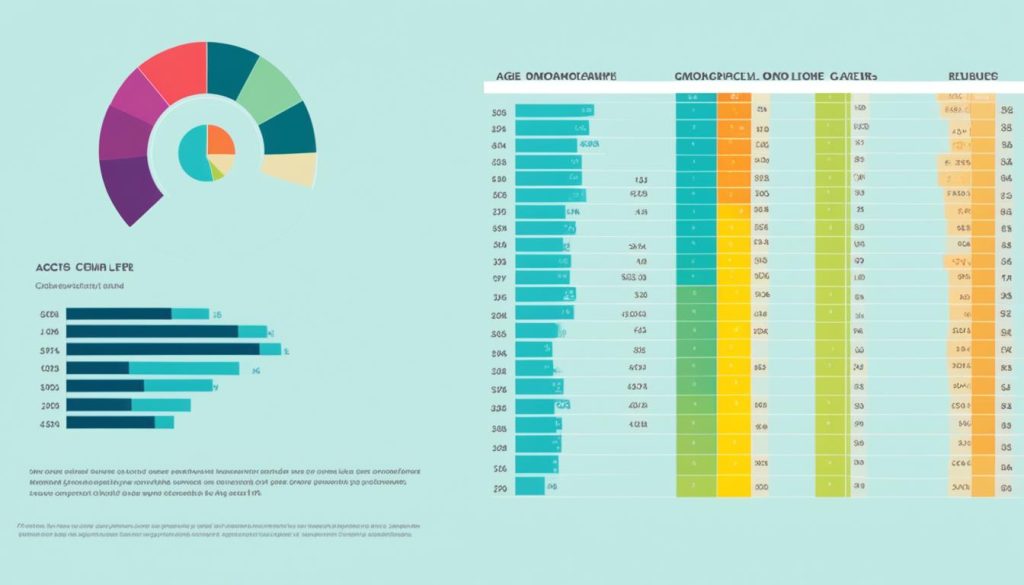Valuing a financial advisor practice is a complex process that requires a thorough assessment of various factors. From client demographics and relationships to financial performance metrics and market conditions, each element contributes to the overall worth of a financial advisor firm. In this article, we will explore the key aspects involved in the valuation of financial advisor practices and provide valuable insights to help you assess the value of your own practice.
When it comes to valuing a financial advisor practice, there are several crucial determinants to consider. These include:
- Client demographics and relationships
- Financial performance metrics
- Growth potential and scalability
- Service model and offerings
- Brand strength and market presence
- Operational infrastructure
- Regulatory compliance and legal aspects
- Market conditions and economic factors
Additionally, evaluating your client base and recurring revenue is crucial during the valuation process. A strong client base with high retention rates and long-standing relationships demonstrates client satisfaction and loyalty. Furthermore, recurring revenue provides stability and security, especially in times of economic uncertainty.
Understanding client demographics is also essential as it offers valuable insights into future growth potential. Factors such as age distribution, wealth levels, and niche markets can help identify opportunities for asset growth and potential risks of client attrition.
When valuing a financial advisor practice, various methods can be employed, such as multiples of revenue and multiples of cash flow. These methods compare the practice’s statistics to those of similar businesses that have recently been sold, providing a starting point for negotiations. However, it’s important to conduct a detailed financial analysis to forecast future cash flow accurately.
Other considerations that significantly impact the value of a financial advisor practice include the brand reputation, intellectual property, technology infrastructure, and regulatory compliance of the practice. A reputable brand and robust risk management systems enhance the practice’s credibility, while advanced technology infrastructure enables efficiency and scalability.
In conclusion, valuing a financial advisor practice requires a comprehensive evaluation of various factors. By understanding the determinants mentioned throughout this article, you can better assess the worth of your practice and make informed decisions about your business.
Key Takeaways:
- A comprehensive financial advisor practice valuation involves assessing multiple determinants such as client demographics, financial metrics, market conditions, and more.
- Evaluating the client base and recurring revenue is crucial for stable income and resilience during economic uncertainty.
- Understanding client demographics helps identify growth potential and risk factors.
- Different valuation methods, such as multiples of revenue and multiples of cash flow, can aid in determining the worth of a financial advisor practice.
- The brand reputation, intellectual property, technology infrastructure, and regulatory compliance of a practice impact its overall value.
Examining the Client Base and Recurring Revenue
A robust client base is vital for ensuring stable income within an advisory practice. Evaluating the client base involves considering several factors, including retention rates, client relationship duration, and recurring revenue.
Retention Rates
Retention rates indicate the level of client satisfaction and loyalty, providing valuable insights into the strength of the client-advisor relationship. Higher retention rates signify a more satisfied client base, which not only aids in maintaining recurring revenue but also serves as a testament to the practice’s ability to meet clients’ needs over the long term. By fostering strong and trusting relationships, advisors can enhance client retention, bolstering the stability of their practice.
Client Relationship Duration
The duration of client relationships reflects the practice’s effectiveness in engaging and retaining clients over an extended period. Longer client relationships indicate a higher level of trust and loyalty, contributing to a stable and recurring revenue stream. Engaging clients and building lasting relationships are key to minimizing client turnover and maximizing the potential for consistent income. By providing exceptional service and continually delivering value, advisors can cultivate enduring client relationships and strengthen their practice.
Recurring Revenue
Recurring revenue is a critical component of financial stability for advisory practices, especially during market fluctuations and economic uncertainty. It provides a consistent income stream that helps offset potential revenue fluctuations resulting from market volatility or changes in client circumstances. By building a business model focused on recurring revenue, advisors can create a solid foundation for their practice’s financial success.
| Key Benefits of Recurring Revenue |
|---|
| Stability during market fluctuations |
| Predictable cash flow |
| Improved business valuation |
| Ability to weather economic uncertainty |
“Recurring revenue provides not only stability but also the potential for long-term growth. By developing and nurturing enduring client relationships, advisors can establish a solid foundation for their practice and ensure consistent revenue throughout their career.” – Jane Smith, Financial Advisor
Understanding Client Demographics for Future Growth
When it comes to valuing a financial advisor practice and planning for its future growth, understanding the demographics of the client base is crucial. By analyzing client demographics, financial advisors can gain valuable insights into the potential for growth and identify key opportunities for success.
Client demographics encompass various factors that provide a detailed understanding of the composition of the client base. These factors include age distribution, wealth levels, and niche markets.
Age Distribution and its Implications
The age distribution of a financial advisor’s client base is an essential consideration. By examining the distribution, advisors can anticipate opportunities for asset growth and identify potential risks associated with clients nearing retirement.
For instance, if a significant portion of the client base consists of younger individuals, there is a high potential for long-term asset growth. At the same time, a large proportion of older clients may pose risks of attrition as they approach retirement and begin to withdraw their investments.
Wealth Levels and Accumulation Potential
An understanding of the wealth levels of the client base is vital for projecting future growth. Financial advisors can assess the accumulation potential of their clients and tailor their services accordingly.
For example, high-net-worth clients with significant wealth accumulation potential may require more sophisticated investment strategies and personalized wealth management solutions. On the other hand, clients with lower wealth levels may benefit from financial planning services aimed at helping them achieve their financial goals.
Niche Markets and Increased Profitability
Identifying niche markets within the client base can offer unique growth opportunities and potentially higher profitability for financial advisors. Niche markets refer to specific segments of the client base with distinct needs or characteristics.
By focusing on niche markets, financial advisors can tailor their offerings and services to meet the unique needs of these clients. This specialization allows advisors to differentiate themselves from competitors and build a reputation as experts in serving specific client segments.

Understanding client demographics is a crucial step in strategic planning for future growth in the financial advisory industry. By analyzing age distribution, wealth levels, and niche markets, advisors can make informed decisions about their target audience, tailor their services accordingly, and ultimately position themselves for long-term success.
Advisory Valuation Methods
When determining the value of a financial advisor practice, it is crucial to employ effective valuation methods that provide accurate insights. Two commonly used approaches are the multiples of revenue and multiples of cash flow methods.
Multiples of revenue involves comparing the practice’s revenue to that of similar businesses recently sold. This method assesses the practice’s financial performance and its ability to generate consistent income. By using the revenue as a benchmark, practice owners can gauge their worth in relation to the industry standards.
Multiples of cash flow focuses on the practice’s ability to generate cash and its profitability. This method takes into account the practice’s expenses and the cash flow it generates over a specific period. It helps determine the value based on the amount of cash the practice can generate to cover expenses and provide returns to the owner.
While multiples of revenue and multiples of cash flow provide a starting point for negotiations, it is important to conduct a more detailed financial analysis to forecast future cash flow accurately. This analysis should consider various factors such as expenses, market trends, and potential growth opportunities.
For a comprehensive understanding of valuation, here is a table summarizing the key features of the multiples of revenue and multiples of cash flow methods:
| Valuation Method | Key Features |
|---|---|
| Multiples of Revenue | – Compares practice revenue to similar businesses – Assesses financial performance – Indicates income potential |
| Multiples of Cash Flow | – Considers practice’s cash generation – Evaluates profitability – Accounts for expenses |

These valuation methods provide valuable insights into the value of a financial advisory practice. However, it is important to remember that every practice is unique, and a thorough evaluation should consider additional factors such as client base, brand reputation, intellectual property, technology infrastructure, and regulatory compliance to determine a more accurate valuation.
Additional Considerations for Valuation
When determining the value of a financial advisor practice, it is crucial to take into account various factors beyond financial metrics. These additional considerations can play a significant role in shaping the overall worth and competitive edge of the practice.
Brand Reputation and Intellectual Property
The brand reputation of a practice is a valuable asset that contributes to its perceived value and market position. A strong brand reputation instills trust and confidence in clients, attracting new business and fostering client loyalty. It is important to assess the strength and recognition of the practice’s brand in the industry and among its target market.
The intellectual property of a practice, including proprietary methodologies, unique strategies, and specialized knowledge, can also enhance its value. Intellectual property provides a competitive advantage and differentiates the practice from its competitors. It is essential to identify and evaluate any intellectual property assets owned by the practice.
Technology Infrastructure and Systems
The technology infrastructure and systems utilized by a financial advisor practice play a critical role in its efficiency, scalability, and ability to adapt to changing market conditions. A robust and well-integrated technology infrastructure enhances operational efficiency, enables effective client communication and engagement, and facilitates seamless service delivery. The evaluation of the practice’s technology infrastructure should include considerations such as the quality and reliability of the systems, the level of integration, and the potential for future upgrades and innovations.
Regulatory Compliance
Compliance with regulatory requirements is a fundamental aspect of any financial advisor practice. Demonstrating a strong commitment to regulatory compliance not only minimizes risks but also enhances the practice’s credibility and reputation. A thorough assessment of the practice’s compliance procedures, documentation, and risk management systems should be conducted to ensure adherence to applicable regulations and industry standards.
By taking these additional considerations into account, the overall valuation of a financial advisor practice can be more comprehensive and accurate. The brand reputation, intellectual property, technology infrastructure, and regulatory compliance of the practice contribute to its value and should be thoroughly evaluated during the valuation process.
Conclusion
Valuing a financial advisor practice involves a comprehensive evaluation of various factors. By considering client demographics, recurring revenue, valuation methods, brand reputation, intellectual property, technology infrastructure, and regulatory compliance, practice owners can determine the worth of their businesses and make informed decisions.
Client demographics provide insights into growth potential, while recurring revenue ensures stability in uncertain economic conditions. Valuation methods such as multiples of revenue and multiples of cash flow offer starting points for negotiations, but a detailed financial analysis is crucial for accurate forecasting.
In addition, brand reputation, intellectual property, and technology infrastructure contribute to the practice’s value and competitive edge. Compliance with regulatory requirements and robust risk management systems enhance credibility.
By taking all these factors into account, financial advisors can confidently assess the value of their practice and take steps to enhance its worth.




No comments! Be the first commenter?